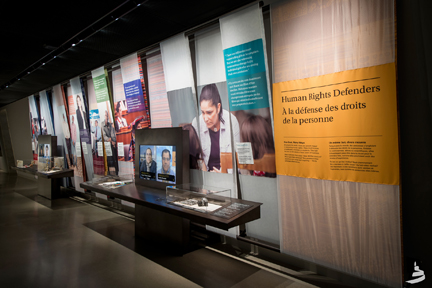I’ve been editing the weekly (bi-weekly in summer) newsletter for science journalists in Canada since February 2018. The newsletter shares with authorized subscribers the Science Media Centre’s top newsworthy picks, with pithy descriptions, from among all the embargoed articles on Eurekalert and peer-reviewed journal sites by Canadian researchers that are scheduled to be published that week. It also includes brief synopses of recently published articles, policy papers, science-related government announcements, and job notices of interest to Canadian science journalists.
From 2015 to 2017, I managed and edited the Engineers and Geoscientists British Columbia (formerly APEGBC) magazine, Innovation.
View the editions I worked on:
- May/June 2017
- March/April 2017
- January/February 2017
- November/December 2016
- September/October 2016
- July/August 2016
- May/June 2016
- March/April 2016
- January/February 2016
- November/December 2015
- September/October 2015
View the annual reports I wrote the body copy for:
View a sampling news articles that I wrote for APEGBC News, the monthly e-newsletter sent to members:
- Study highlights BC labour market information needs – May 31, 2017
- Guidelines for flood mapping in BC released– May 16, 2017
- 2017/2018 budget maintains current membership fees – May 05, 2017
- Guidelines outline practice standards for riparian area assessments – May 04, 2017
- Task force recommends corporate regulation – May 04, 2017
- APEGBC to help develop tools to increase post-disaster community resilience – May 01, 2017
- Foundation awards 2017 Sheri Plewes Scholarship and Frank Bauman Bursary – April 24, 2017
- APEGBC branches host events around BC for National Engineering and Geoscience Month – April 03, 2017
- APEGBC partners with government on post-earthquake building evaluation training– March 16, 2017
- Working with government: Proactive regulation in a changing environment – March 07, 2017
- APEGBC develops practice guidelines on performance-based seismic design of bridges – March 03, 2017
- Council approves registration hearings policy and procedure – February 28, 2017
- Position paper commits APEGBC to support members with climate change-related resources – January 09, 2017
- Accredited Employer Member-in-Training Pilot Program sees steady growth – January 06, 2017
- 2016/2017 Project Highlights: Call for submissions – November 14, 2016
- APEGBC recognizes contributions and achievements with 2016 awards – November 01, 2016
- Site characterization guidelines improve dam safety – September 01, 2016
November 29—Celebrating a three-tined tribute to the stuff that makes gardens grow seems odd at this time of year. But Global Soil Week, punctuates the end of the U.N.’s International Year of Soils and ends in a trifecta with Saturday’s World Soil Day, relates as much to winter here as it does to places with growing seasons that span the turn of the year.
During Victoria’s damp season, grass gone brown during summer sprouts green, winter heathers bloom, and mushrooms burst forth from the soil.
The chanterelles, pine mushrooms, morels, and other late-year treats are signposts of the complexity and mystery of our coastal soils.
This much we know about soil—we depend on it. To paraphrase the U.N. Food and Agricultural Organization’s website, soil makes possible food, feed, fuel and fibre production. It helps us manage water and prevent drought, and provides supports ecosystem and human wellbeing. Soil does so much for us.
This much we also prefer to overlook. More »
I recently asked Nature Boy when he had last seen a doctor.
He answered, “Not since the final season of House M.D.”
Other British Columbians share a similar rate of exposure to medical practice. Most of us are more familiar with characters who take medical license on TV than with doctors licensed by the College of Physicians and Surgeons of B.C.
Television physicians, after all, make weekly house calls to our living rooms. That practice has largely disappeared in the real world. More »
Human Rights Defenders Exhibit
Canadian Museum for Human Rights
This exhibit features Canadians and others who have contributed significantly to human rights through their work and personal lives.
View samples of my writing for this exhibit.
Breaking the Silence interactive study table
Canadian Museum for Human Rights
In Breaking the Silence, a giant interactive table sits in the centre of the gallery, with points that expand with information when you touch them.
The table explores 19 examples of genocide and mass atrocity from around the world, and breaks each event down into four stages that are common to all genocides and major atrocities:
- The build up, when the stage is set for violence
- The violation, or the actual committing of genocide or atrocity
- Distortion and denial, or the cover up and refusal to acknowledge the atrocity; and
- Breaking the silence, when the truth becomes known and the violence is acknowledged—by the larger, global community, if not by the perpetrators.
The interactive display emphasizes the importance of speaking out to protect human rights before human rights violations escalate. More »
Protecting Rights in Canada multimedia debate stations
Canadian Museum for Human Rights
The Protecting Rights in Canada exhibit includes a series of interactive stations where visitors watch news clips about, and read arguments for and against, key Canadian court cases that have defined humans rights in Canada—often on very divisive issues.
Visitors are then asked to “vote” for which side they think is correct. After everyone at the station has voted, the results are displayed alongside a running tally of all the ballots people who have cast at the exhibit before them. More »







